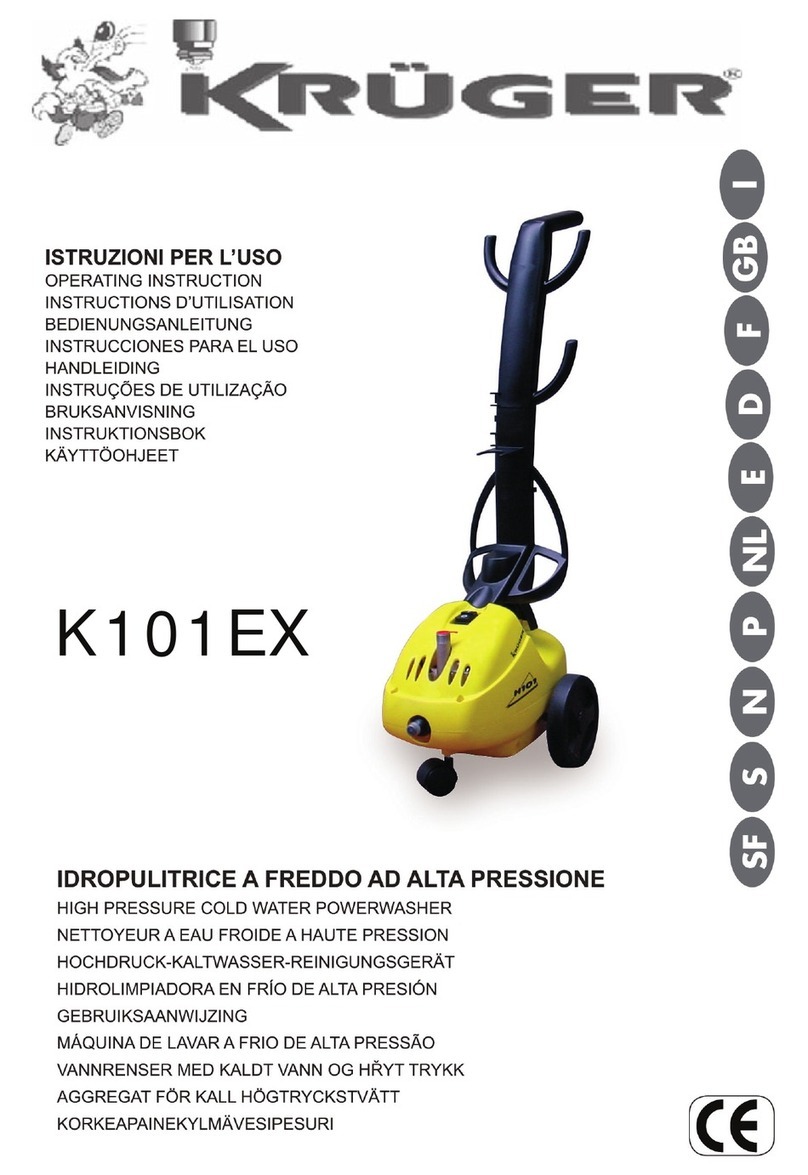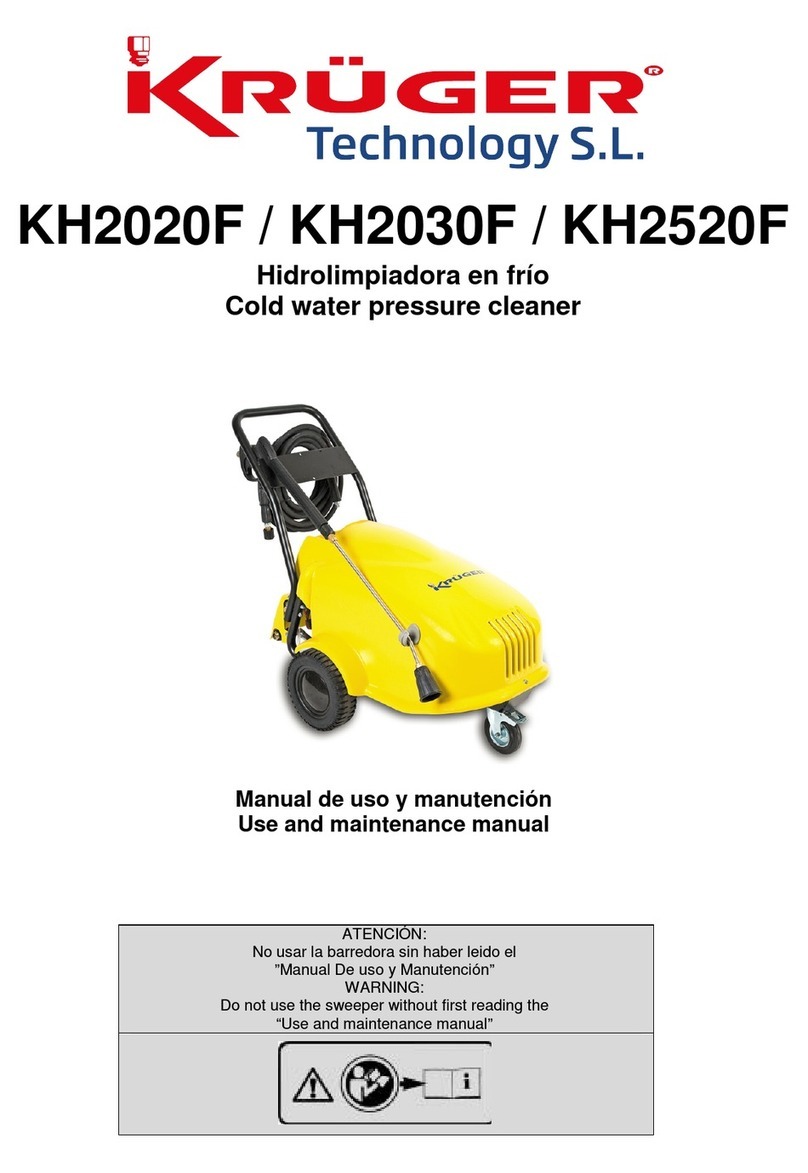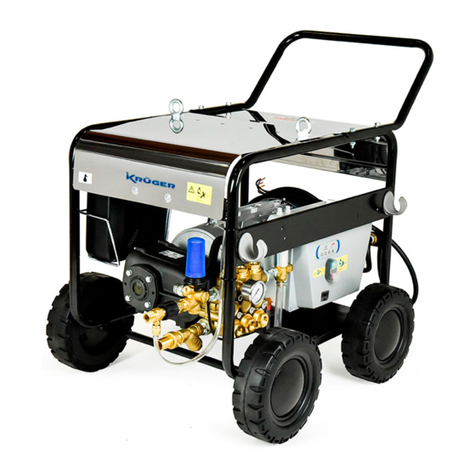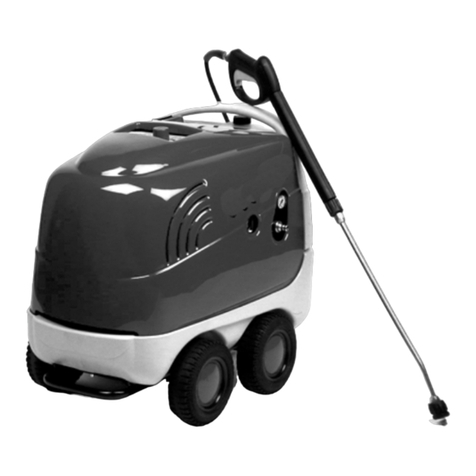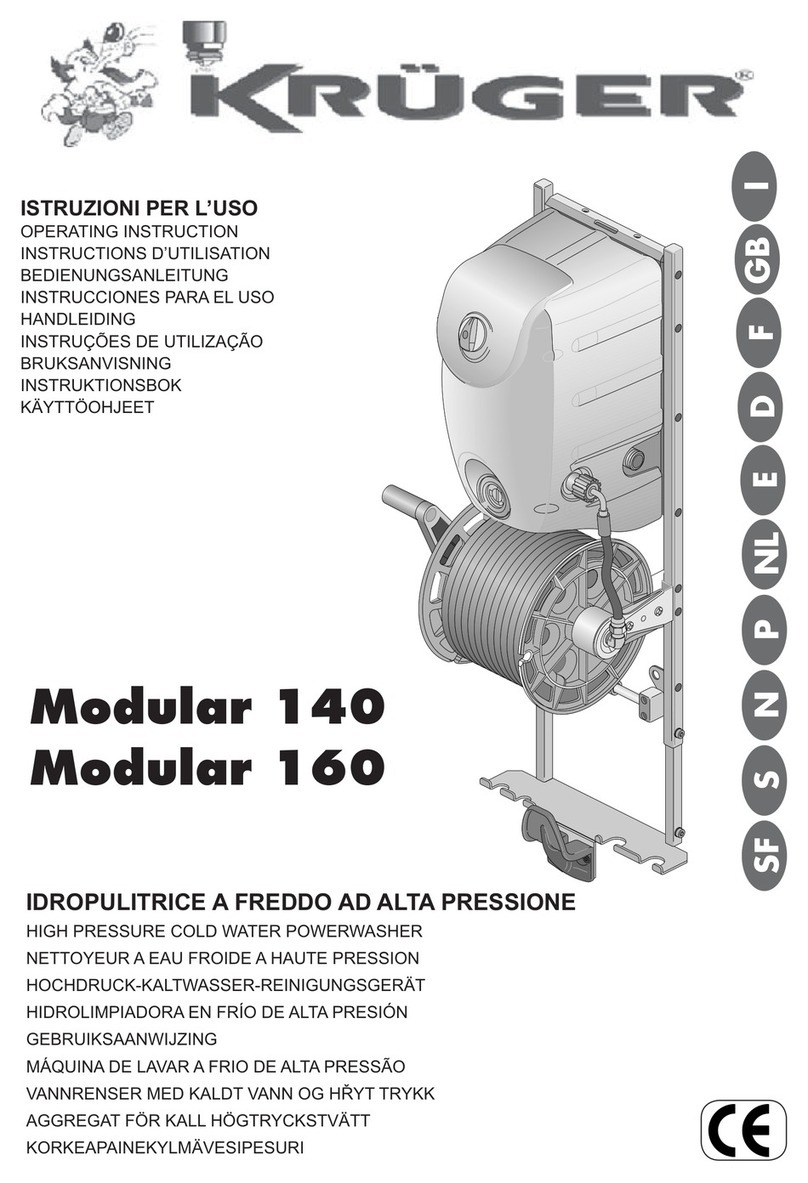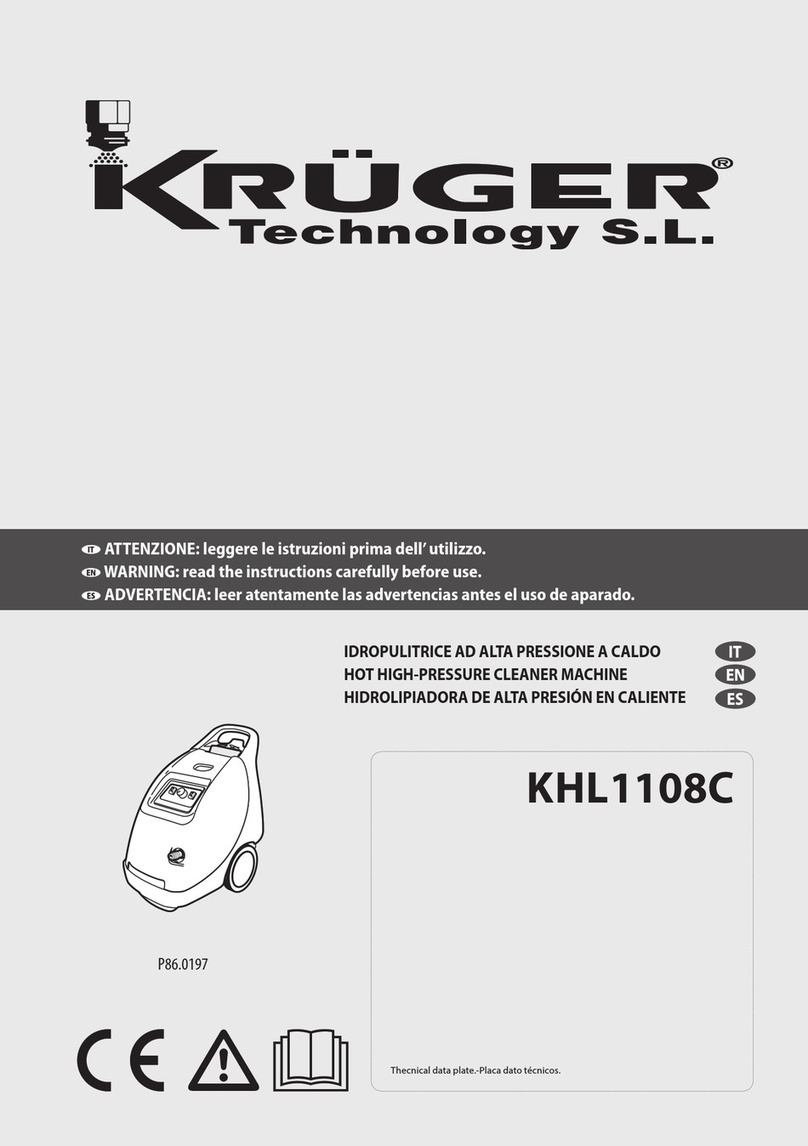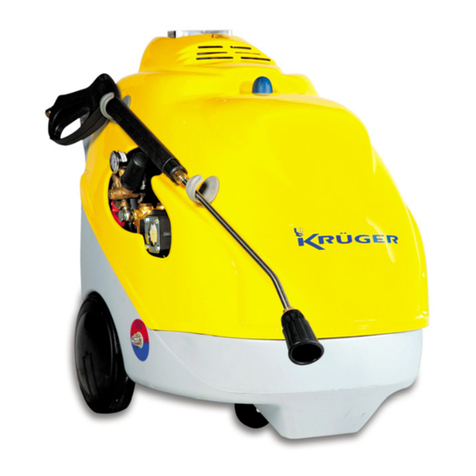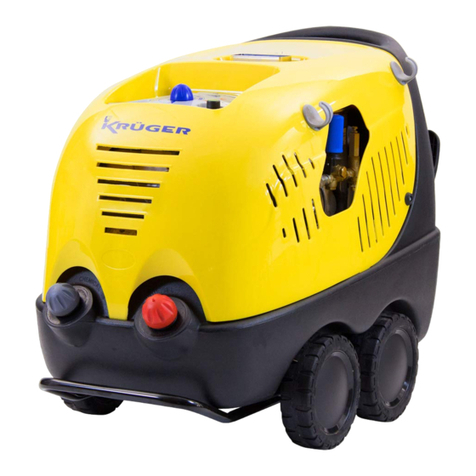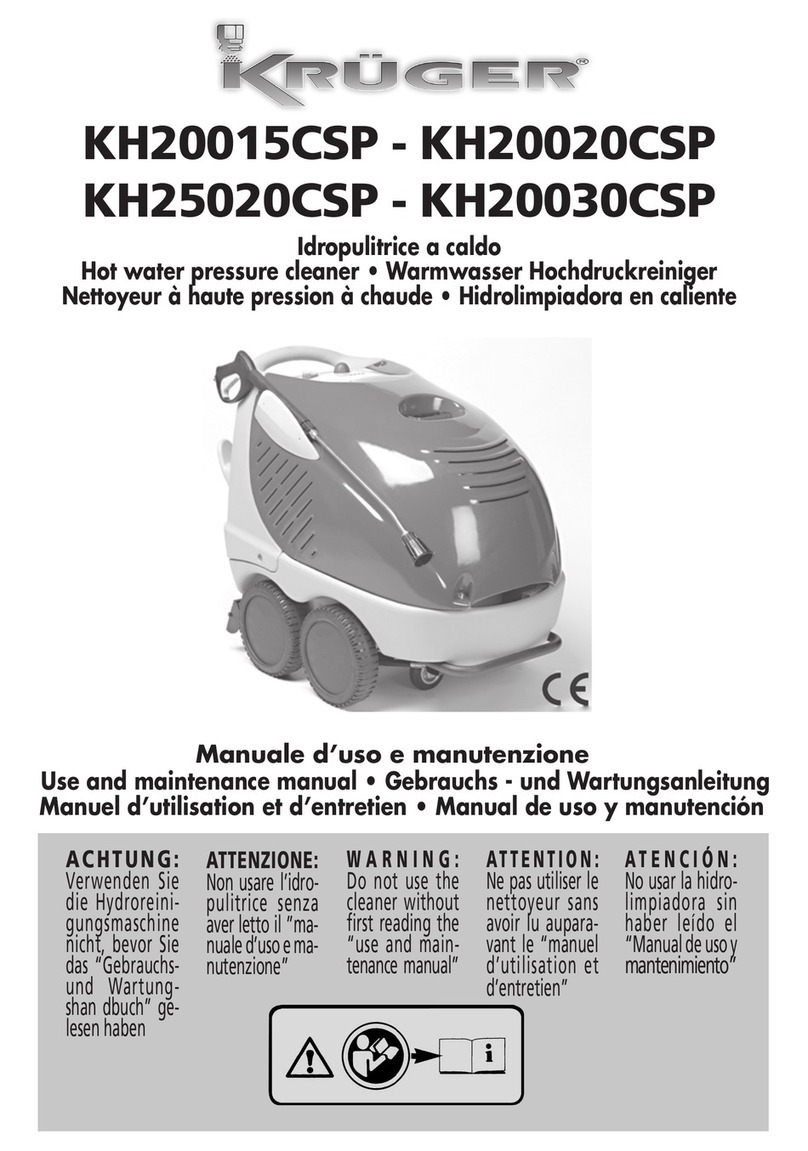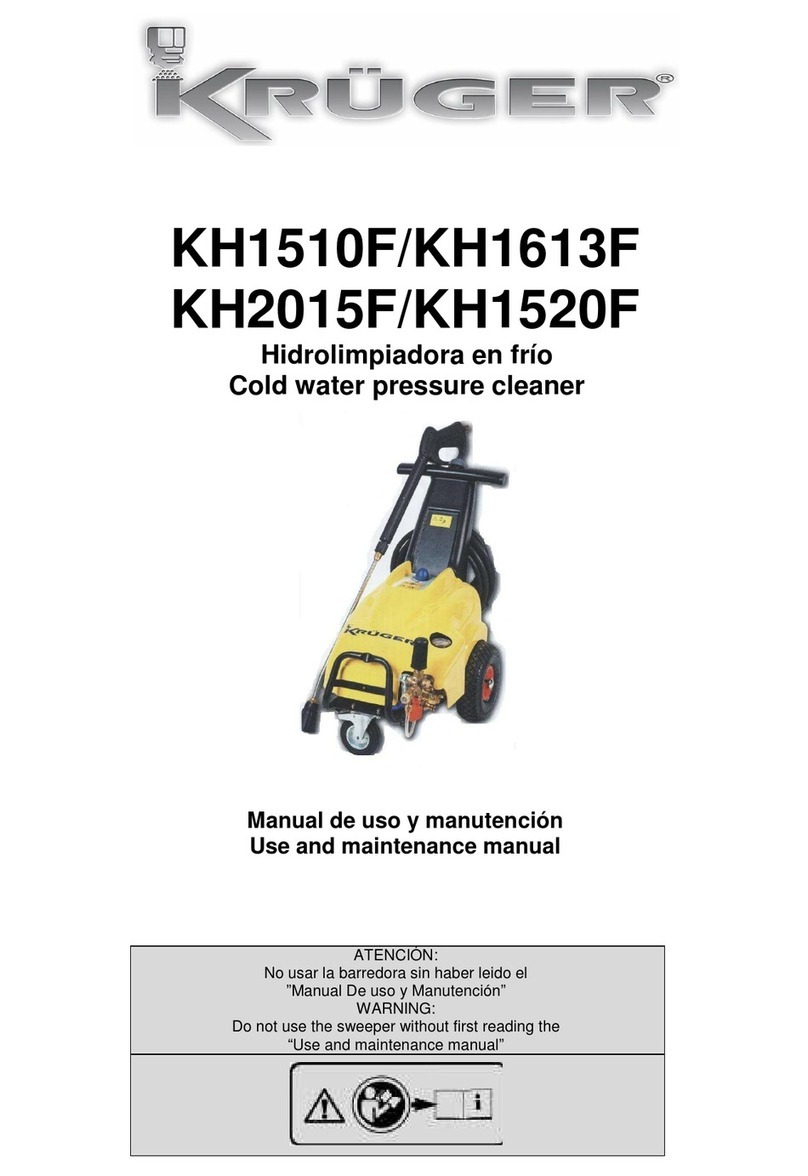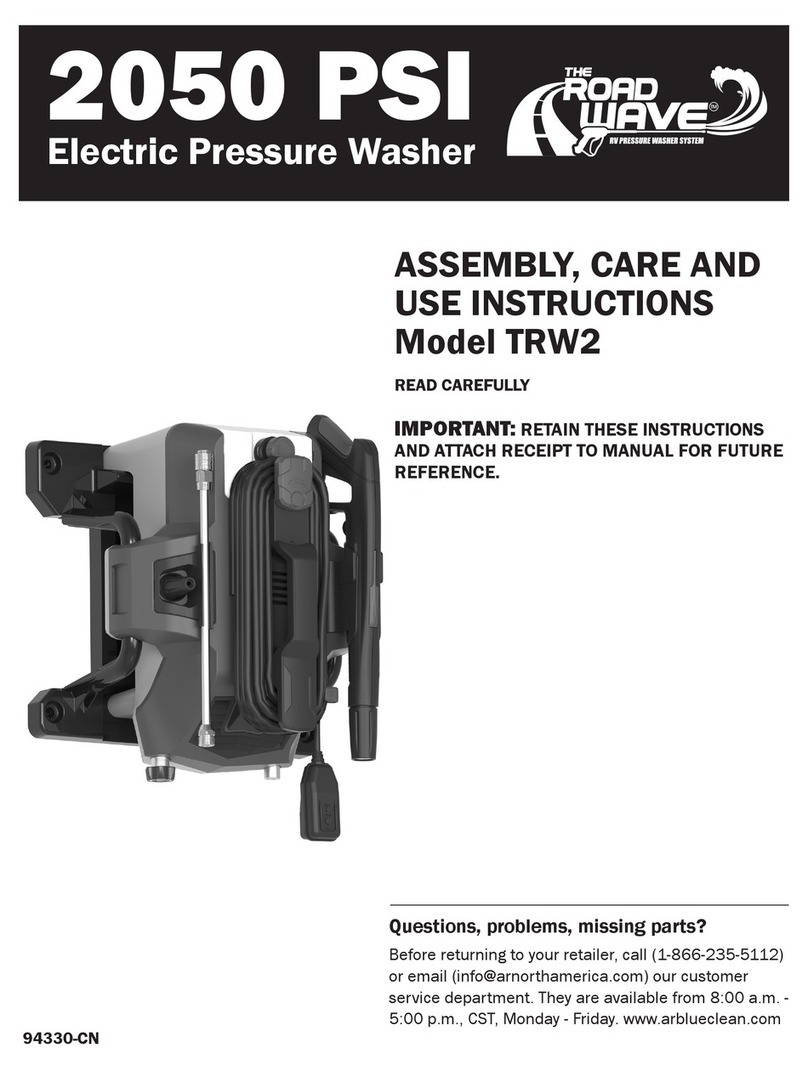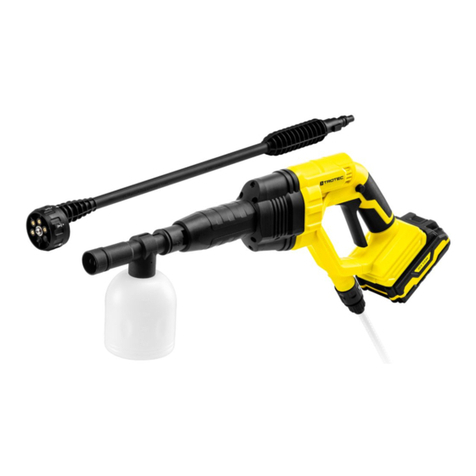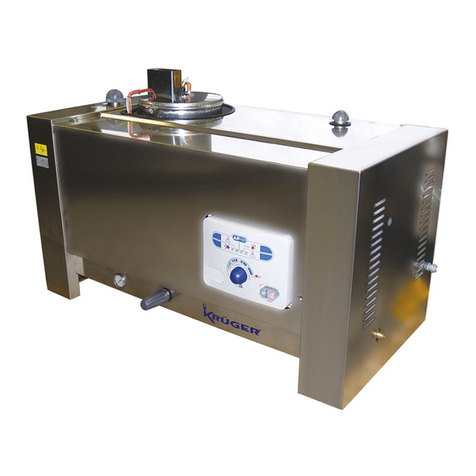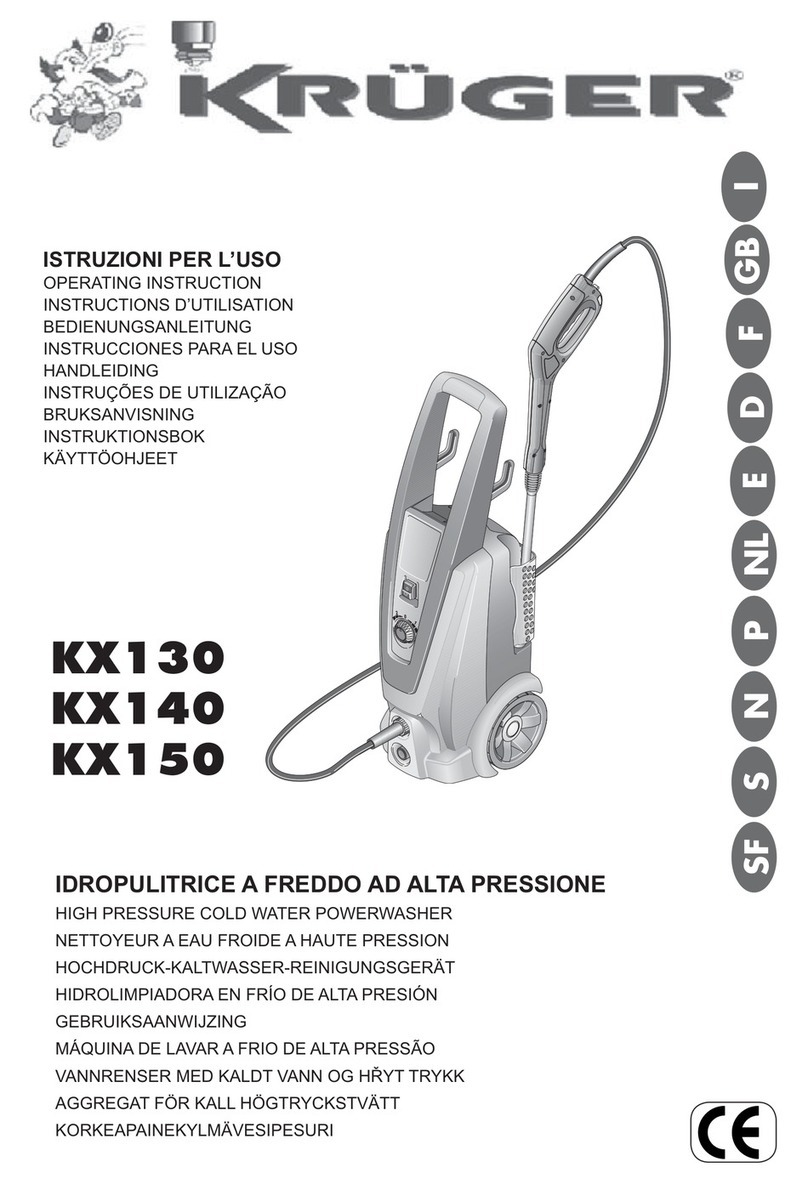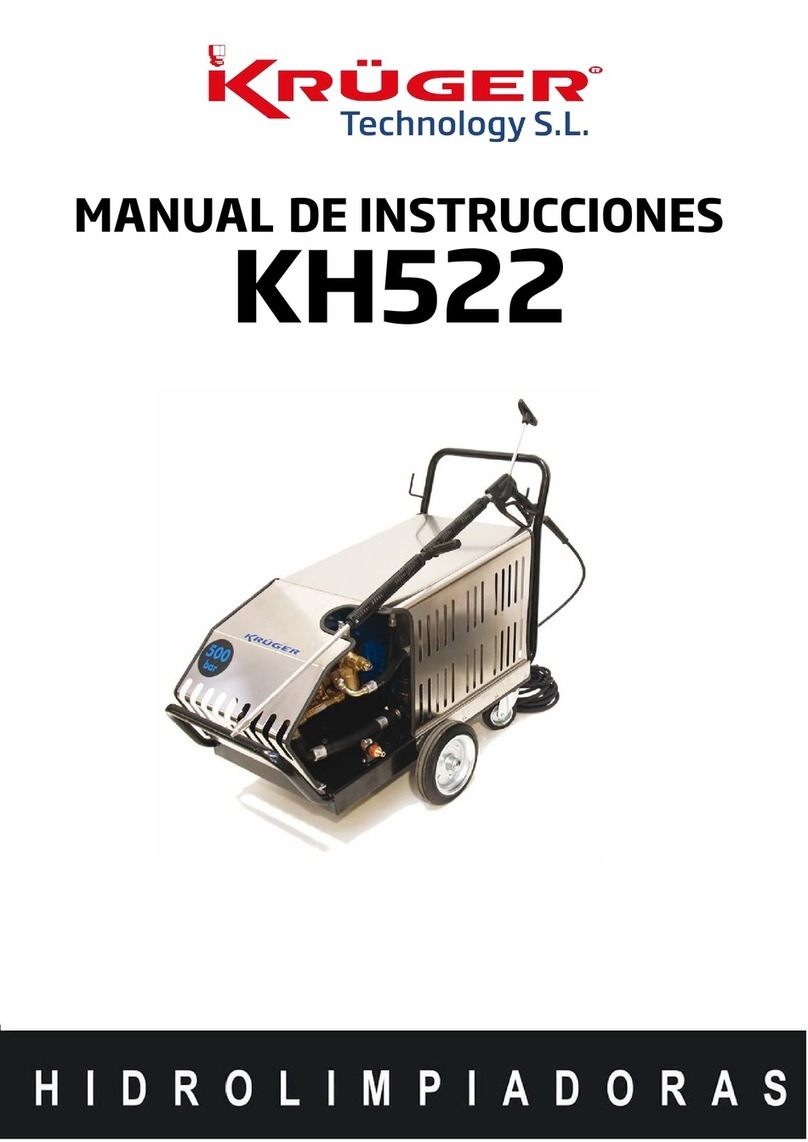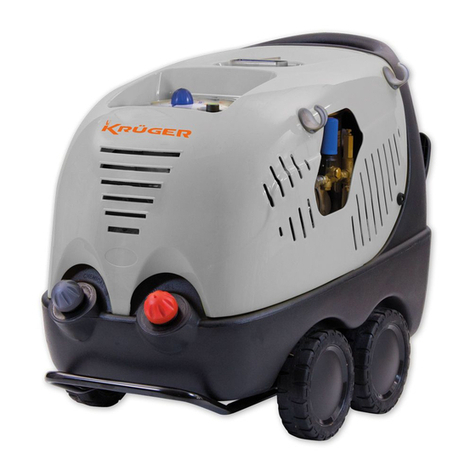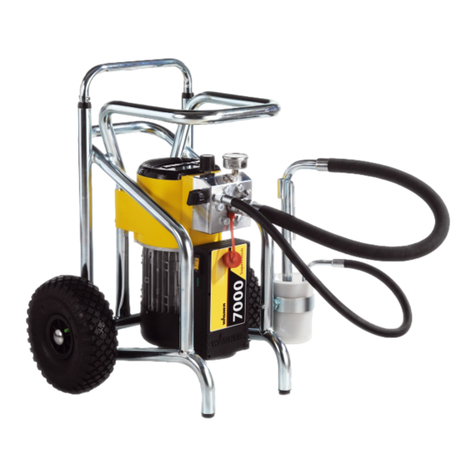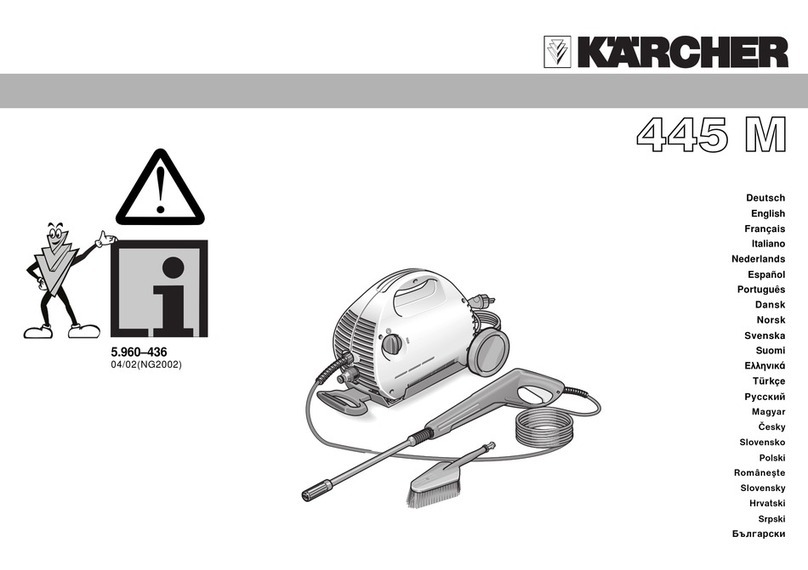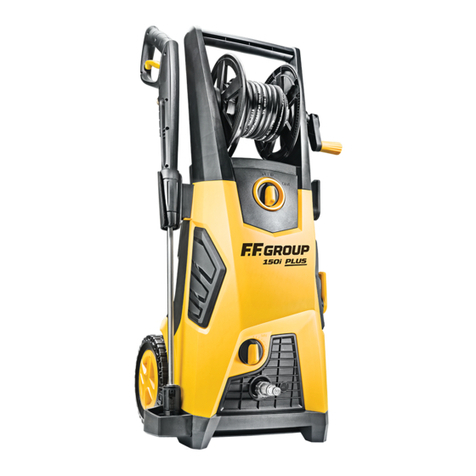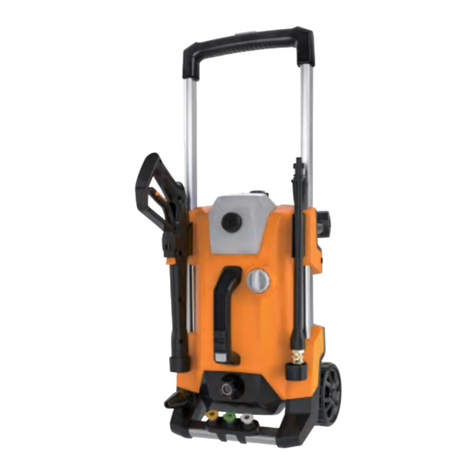20
EMPLOIS DU NETTOYEUR HAUTE
PRESSION
L'appareil est destiné exclusivement au nettoyage des
machines, des véhicules, des bâtiments, des outils et,
de manière générale, des surfaces pouvant être traitées
avec un jet de solution détergente à une pression com-
prise entre 25 et 190 bars (360 - 2755 PSI).
Cet appareil a été conçu pour être utilisé avec des
détergents fournis ou conseillés par le constructeur.
L'emploi d'autres détergents ou d'autres substances
chimiques peut nuire à la sécurité de l'appareil.
Cet appareil devra être destiné exclusivement à l'usage
pour lequel il a été spécifiquement conçu.
Tout autre emploi doit être considéré comme inadéquat
et donc déraisonnable.
La sécurité électrique de cet appareil n’est assurée
que lorsque celui-ci est correctement branché à une
installation de mise à la terre en état, conformément aux
normes de sécurité électrique en vigueur (pour l’Italie,
se conformer aux dispositions de la loi 46/90).
Il est nécessaire de vérifier cette condition de sécurité
fondamentale ; en cas de doute, demander à des
techniciens qualifiés d’effectuer un contrôle rigoureux
de l’installation.
Le constructeur ne peut être tenu pour responsable en
cas de dommages éventuels causés par le manque de
mise à la terre de l’installation.
Le nettoyeur haute pression doit être branché au secteur
par un interrupteur omnipolaire avec une ouverture
des contacts d’au moins 3 mm et des caractéristiques
électriques appropriées à l’appareil (cette condition
n’est pas applicable aux nettoyeurs haute pression mu-
nis de fiche ayant une puissance inférieure à 3 kW).
Pour débrancher l’appareil du réseau électrique, il suffit
d’enlever la fiche de la prise de courant ou d’étein-
dre l’interrupteur omnipolaire sur l’installation.
Les nettoyeurs haute pression avec dispositif
“Total stop” sont éteints quand l’interrupteur
omnipolaire est en position “O” ou quand la
fiche est débranchée de la prise de courant.
Exemples d'emplois déraisonnables :
- Lavages de surfaces non appropriées à un traite-
ment avec un jet à haute pression.
- Lavage de personnes, d'animaux, d'appareils
électriques et de l'appareil lui-même.
- Utilisation de détergents ou de substances chimi-
ques non adéquats.
- Bloquer le cran (levier) de la lance en position de
sortie du liquide.
Le constructeur ne peut être tenu pour responsable des
éventuels dommages causés par un usage inadéquat,
incorrect ou déraisonnable.
En matière de sécurité, les nettoyeurs haute pression
sont construits conformément à la Norme européenne
EN 60 335-1 (norme générale) et EN 600335 2 79
(norme spécifique).
S'assurer au moment de l'achat que
le produit est muni de la plaquette. Si
ce n'est pas le cas, avertir immédiate-
ment le constructeur et/ou le détaillant.
Les appareils qui ne sont pas munis de la
plaquette ne doivent pas être utilisés : dans
le cas contraire, le constructeur serait déga-
gé de toute responsabilité.
Les produits qui ne sont pas munis de
plaquette doivent être considérés comme
anonymes et potentiellement dangereux.
REMPLISSAGE DU RESERVOIR DETERGENT.
Choisir dans la gamme des produits conseillés le déter-
gent le plus approprié au type de lavage à effectuer
et le diluer avec de l'eau (fig. 6) en se conformant aux
indications reportées sur l'emballage du produit.
Remplir le bidon du détergent avec le produit dilué
(fig. 7).
Demander à votre détaillant le catalogue des détergents
qui peuvent être utilisés en fonction du type de lavage
à effectuer et du type de surface à traiter.
Après l'emploi d'un détergent, le circuit d'aspiration
doit être rincé avec de l'eau propre (fig. 12).
OPERATIONS PRELIMINAIRES
DEBALLAGE.
Après avoir déballé l'appareil, s'assurer que le net-
toyeur haute pression est intact. En cas de doute, ne
pas utiliser le nettoyeur haute pression.
S'adresser au détaillant.
Les éléments de l’emballage (sachets, boîtes, clous, etc.)
ne doivent pas être laissés à la portée des enfants car
ils sont une source potentielle de danger et doivent être
mis au rebut ou conservés dans le respect des normes
nationales pour la protection de l’environnement.
MONTAGE DES PIECES DETACHEES DE L'AP-
PAREIL.
L'appareil est assemblé par le constructeur pour ce qui
concerne ses parties fondamentales et de sécurité.
Pour des motifs d'emballage et de transport, certains
éléments secondaires du nettoyeur haute pression sont
fournis démontés.
Il reviendra à l'utilisateur de monter ces pièces con-
formément aux instructions fournies dans chaque lot
de montage.
PLAQUETTE SIGNALETIQUE.
La plaquette signalétique indiquant les principales
caractéristiques techniques de votre nettoyeur haute
pression est placée sur le chariot et est toujours visible
(fig. 5).




















